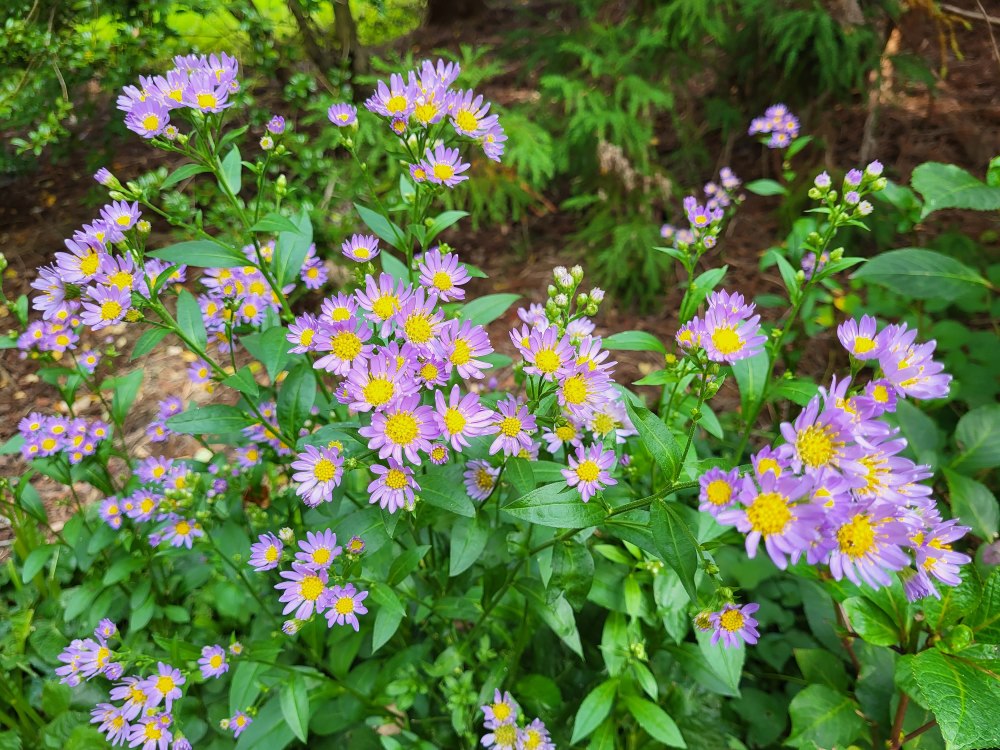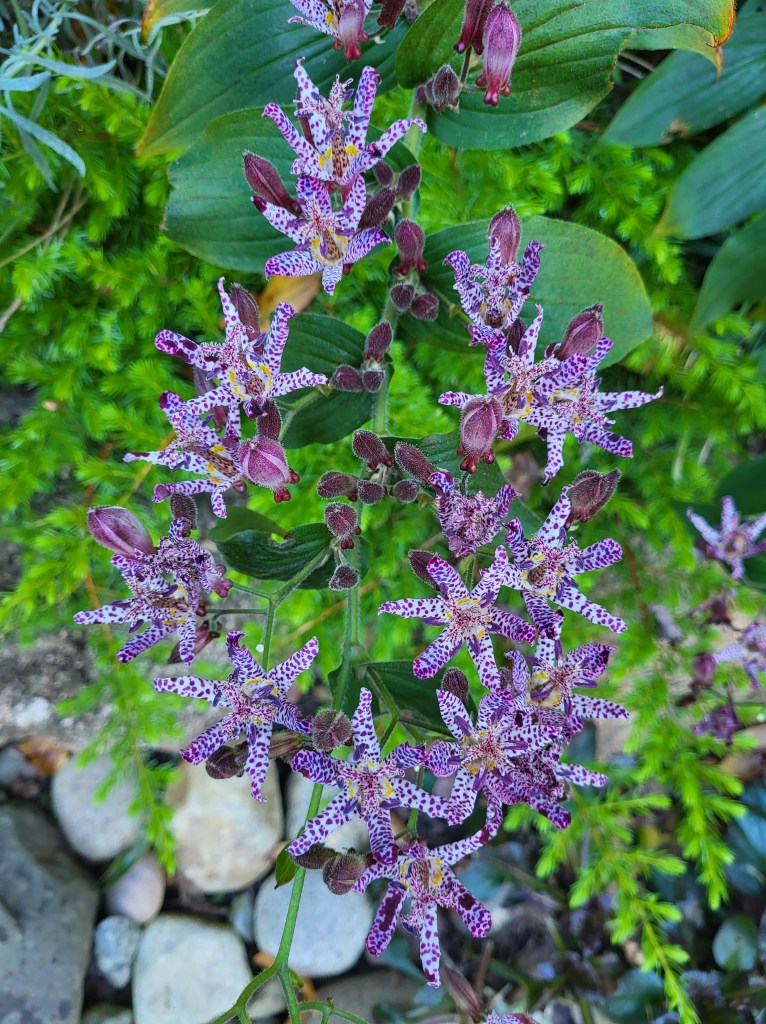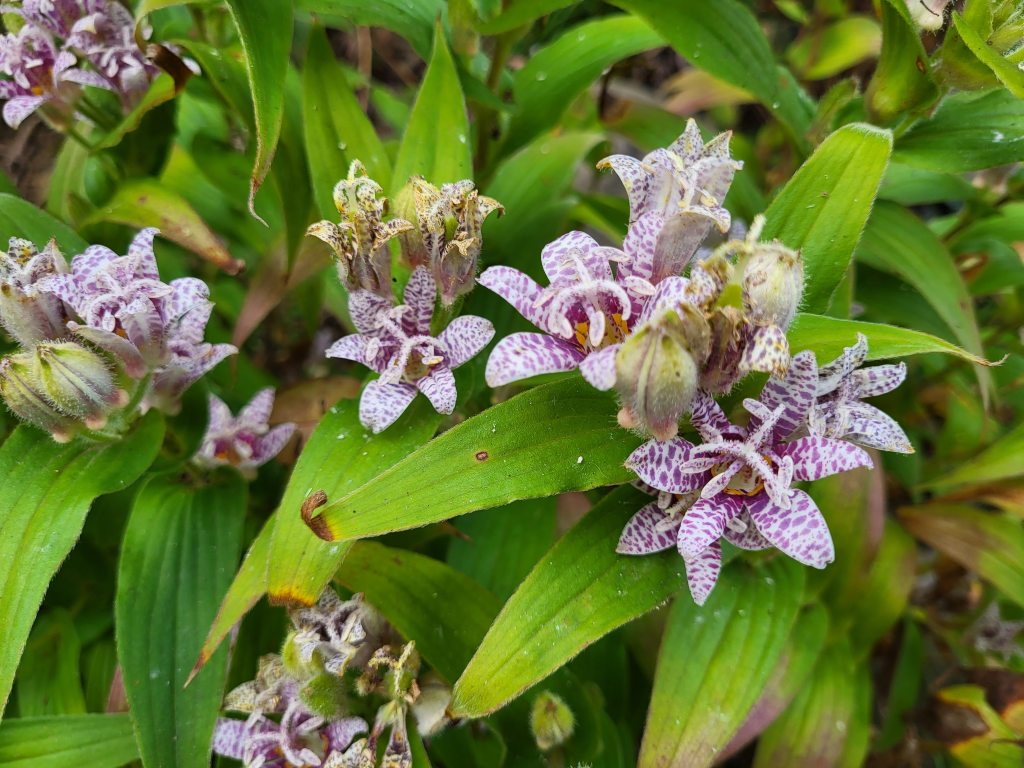In recent years, the tall, coarsely textured Tatarian asters (Aster tataricus, below) have lost their prominent positioning in the garden. Something came along that looks better, longer, so the asters were moved to the back. Despite being more shaded (I thought they would be too shaded), this does not seem to reduce the quantity of flowers, and with their height they still stand out from behind lower shrubs and perennials that are now past their flowering season.


With relentless planting over thirty-four years, and even more the past decade, the garden has grown to become more crowded. Always, decisions must be made when one thing or the other becomes too shaded (or crowded) with diminishing flowers. Today, there are only three distinct toad lilies (Tricyrtis, above and below) flowering (a fourth, ‘Gilt Edge’ begins and fades early), and unfortunately another handful lagging behind in the shade with a few looking like they’ll have no flowers at all.

This late summer and early autumn flower is a favorite, so when a toad lily declines, it must be moved. While several large clumps of ‘Miyazaki’ (below) get a bit crisp along the edges in too much sun, they flower heavily, and a little brown is preferable to fewer flowers. I’m disappointed that I did not recognize the poor growth of the few others earlier so that they could have been moved months ago, but I often don’t pay enough attention until it’s too late. Here, it was nearly too late, but all should be good for next year.

Toad lilies are typically listed as shade perennials, but here the degree of shade is important. I would list them as ideal in part sun to light shade, and I expect too many gardeners are disappointed by a lack of flowers in a shade planting. If they don’t flower abundantly, move them.